
Today was the 18th Paddles Up in the Niagara River. It’s happened every year until last year, when stormy weather conditions caused its cancelation. I had signed up for an eco hike last year but that didn’t happen. So, I made sure to sign up for this year’s eco hike as quickly as possible. Today was the big day. Paddles Up occurs at Beaver Island State Park, and there was plenty to see there. The hike was all about plants, and it was organized by the Niagara Frontier Botanical Society. Our two tour guides were Ed Fuchs and Joanne Schlegel, who told us about a variety of trees and wildflowers. We saw a lot of native plants and some very aggressive plants that crowd out other plants, as well as wicked invasive plants. An example of a wicked invasive plant would be the buckthorn, described as “one of the worst invasives” and even worse than the Callery pear, which was brought in as an ornamental pear tree and stayed because it propagates itself like mad. Another invasive plant that we saw was the multiflora rose.
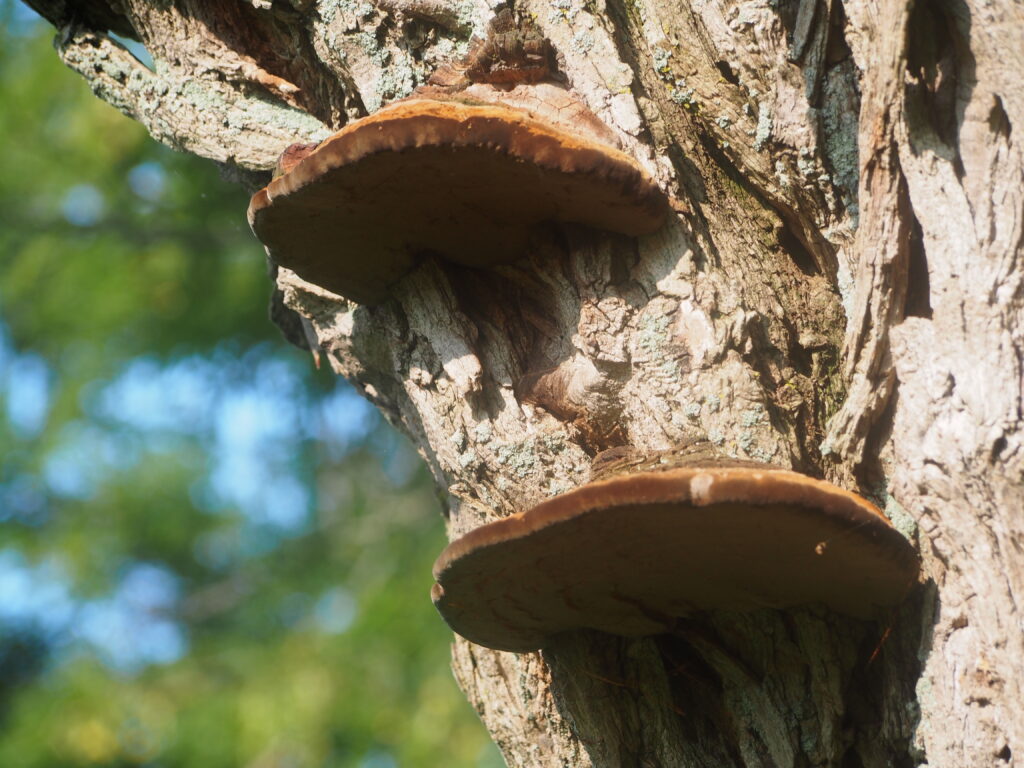
We learned that many plants have some very unpleasant relatives. In the past, for example, people were afraid to eat tomatoes because they thought that tomatoes were poisonous. That was until someone very brave tasted a tomato and didn’t keel over. The tomato, they discovered, is nutritious and not toxic, unlike some, but not all, of its relatives in the nightshade family. Safe plants in the nightshade family include eggplant, potatoes, and peppers. Toxic plants would include belladonna. Oddly enough, that means “Beautiful lady.” It’s highly poisonous and every part of the plant can kill. It was used to poison people in medieval times by Professional Poisoners. Yep, that was a job title. For real. Not as good as Roll Opener, but a job, nevertheless.
Sooo…. another plant with unpleasant relatives is Queen Anne’s lace. It’s actually a wild carrot, but Ed said not to bother harvesting it. “The roots are yellowish and small” and not very tasty. It’s related to parsley and dill. The bad relatives are poison hemlock, water hemlock and giant hogweed. Giant hogweed flowers look like super overgrown Queen Anne’s lace. If you see it, call the Department of Environmental Conservation for removal. It’s really dangerous. It can cause blisters, boils and burns. It’s far worse than poison ivy. So, yep, take a photograph and send it on to the DEC for identification and eradication. The DEC will send employees, fashionable attired in hazmat suits, to complete the eradication process.
Anyway, not all plants are evil so don’t fear. We saw grasses and sedges, common milkweed (the favorite food of monarch butterfly caterpillars), chicory (which is used as a coffee substitute), goldenrods, mugwort (introduced as a medicinal plant), Joe Pye Weed and blue verbane, among others.
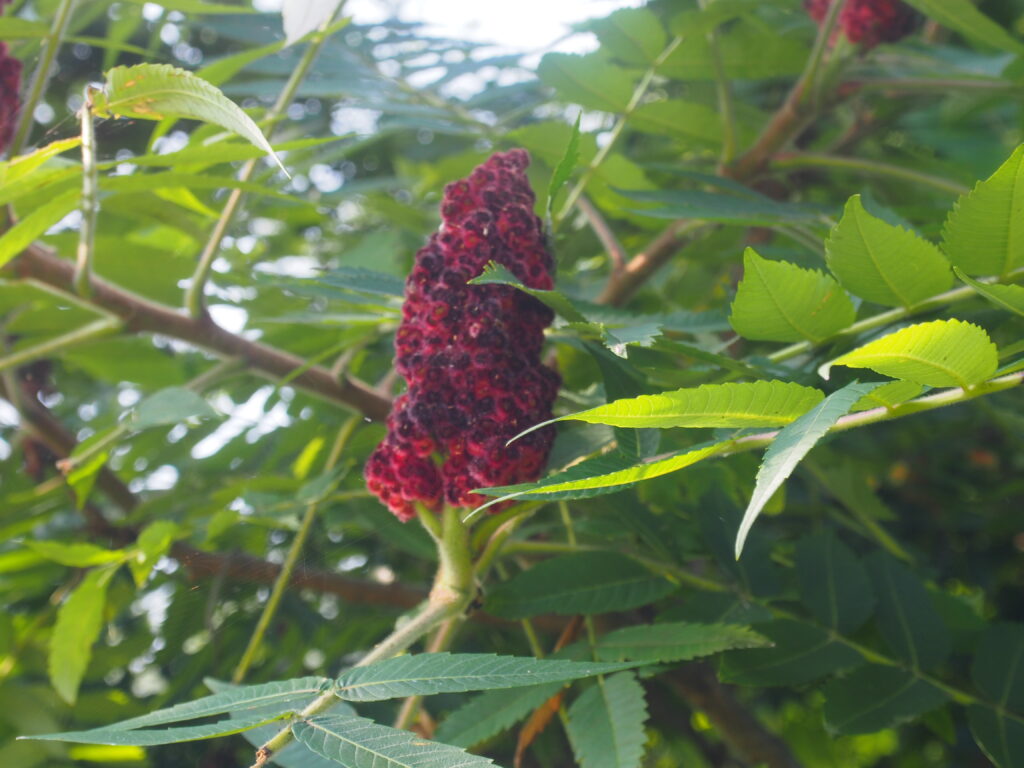
Other wildflowers that we saw on our adventure included sow thistle (a common roadside plant in the aster family), carex (a native sedge) and boneset (in the same genus as Joe Pye Weed, except its flowers are white).
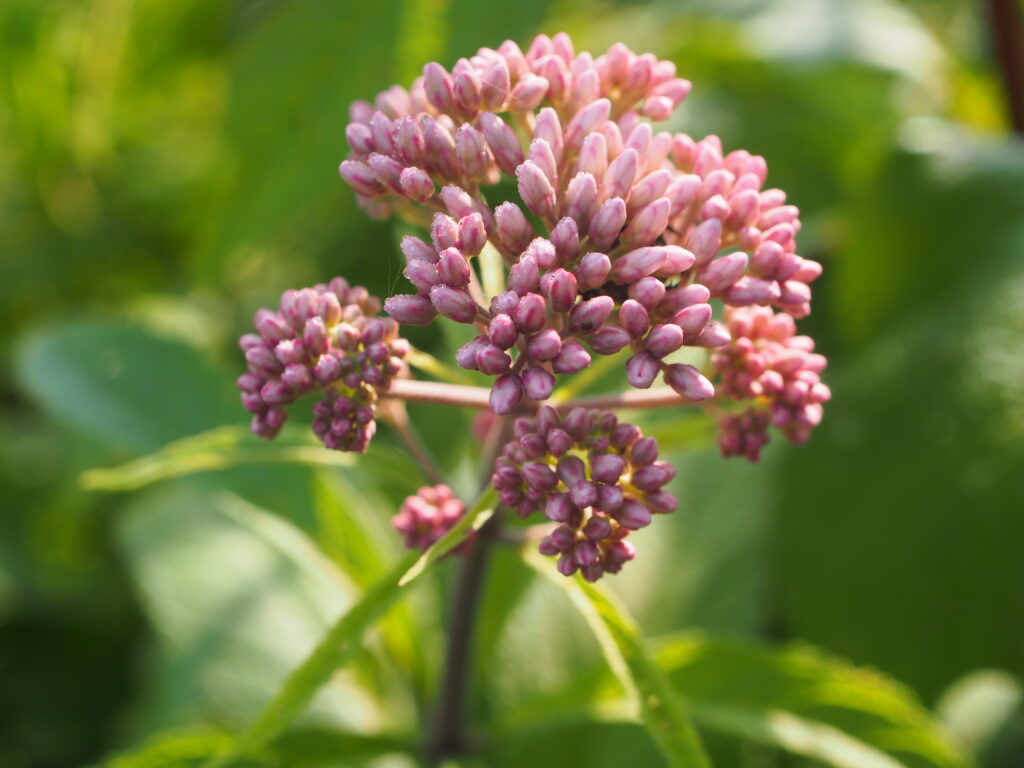
Here are a few visitors to the plants that we saw at Beaver Island State Park.
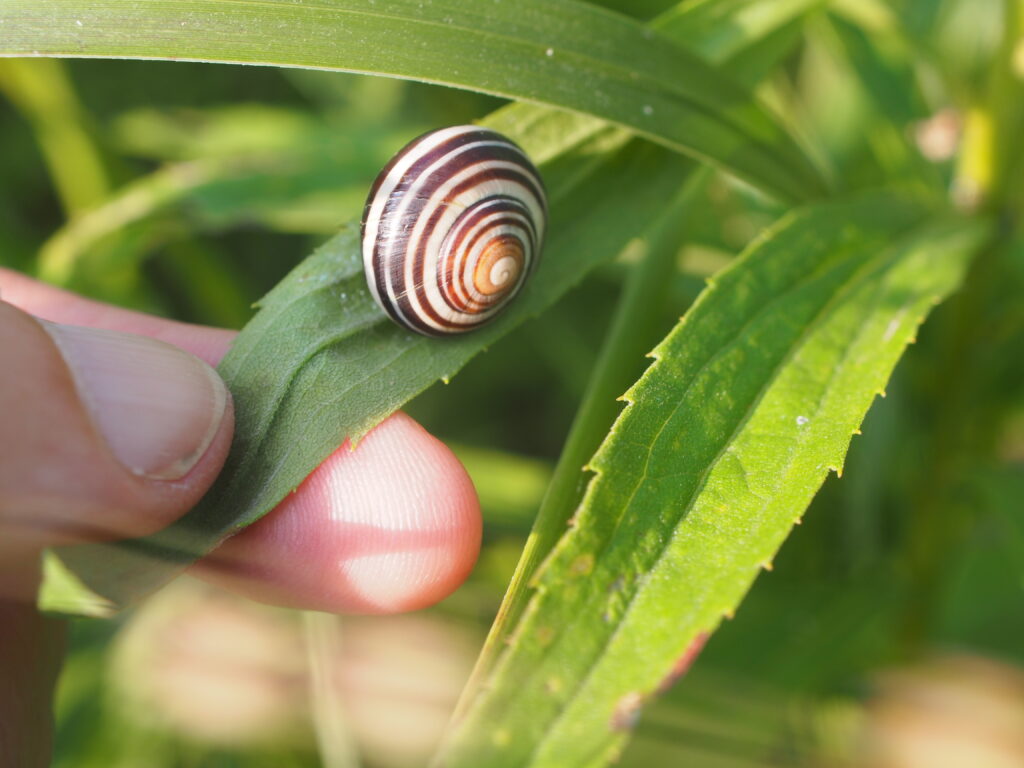
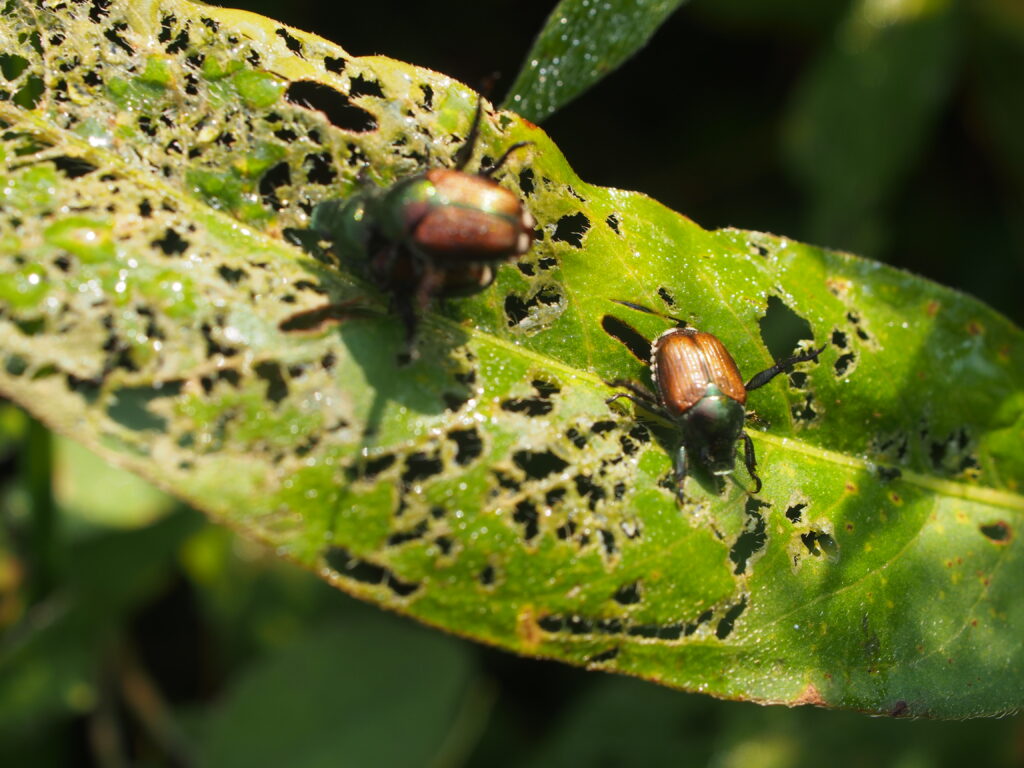
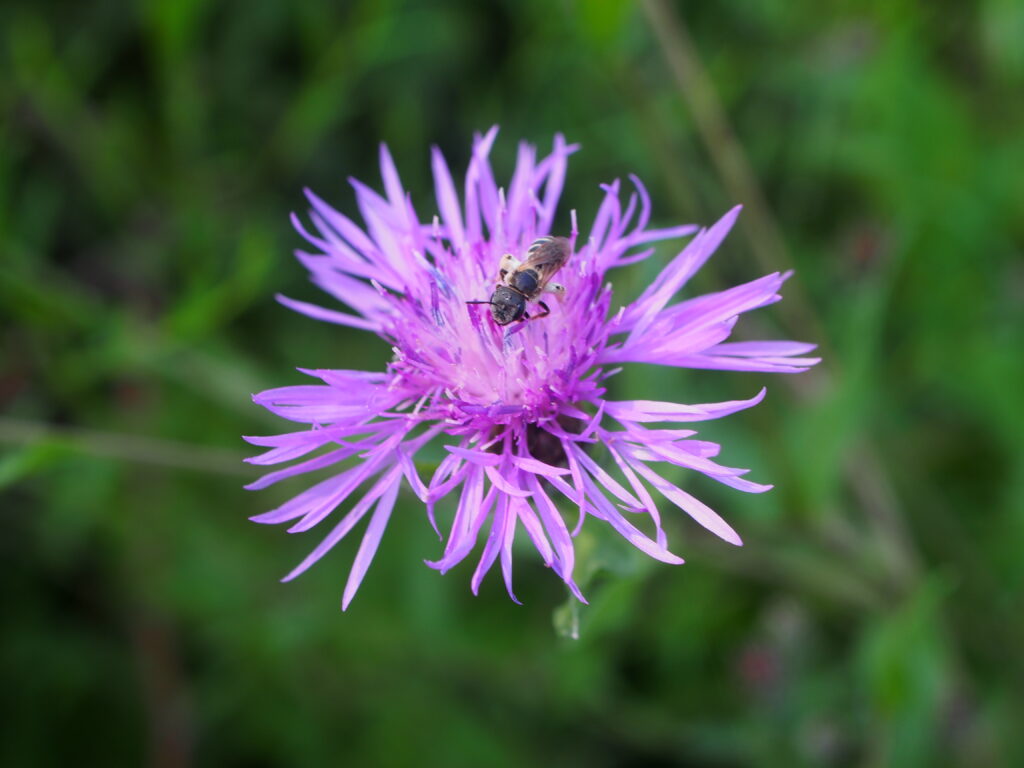
This was a fun tour and I learned a lot about plants. I saw many of the common trees in the area, including dogwood, butternut, basswood, black walnut, black locust, honey locust, hawthorn, red oak, silver maple and bitternut hickory. The tour was planned to take an hour, and I was delighted that it took more than two hours. Both Ed and Joanne were very generous with their time and with their knowledge about wildflowers, trees and insects.
Tomorrow: I’m going to Buffalo for its Garden Walk!! Will share some pictures from that experience!
What a great hike with beautiful photos, thanks from taking me along. Plants are so interesting and good to learn the good from the bad.
You’re very welcome!!! I am grateful that we can enjoy eating tomatoes without fear!
When we would play by the schoolyard, one of the wildflowers was Queen Anne’s lace. How great your guides were able to give you more time on what sounds like a wonderful and very informative hike!
Thank you! I was really fortunate to have such good guides. It was a great experience.
Alice, what a great tour you had. We don’t have most of those plants in Arizona, at least in the Phoenix altitudes. I’m curious: how does the word “frontier” fit in the group’s name? Frontier of what? Aren’t you too far east to be the frontier? 🙂 Japanese Beetles: one year when I was a child in Delaware, we had a massive infestation of them. They covered the leaves of every tree and bush. We picked off thousands, and some kind of oil was used to get them off– maybe NEEM oil, as is recommended today. They are beautiful but, as you say, voracious eaters of plant life. Thanks for the beautiful images and sharing the tour.
Hi Kebba, thank you. Yes, our ecosystem is very different from yours, so the plantlife is very different. As for the term “Niagara Frontier,” this is what I get from AI: “The term ‘frontier’ comes from the French word for “borderland” and was adopted into English in the 15th century. In North America, the term has come to refer to a region at the edge of a settled area. The Niagara Frontier is a region in western New York that’s located between Lakes Ontario and Erie and along the Niagara River. The term dates back to the War of 1812, when the United States and British forces in Canada were in dispute over the northern border. The Niagara Frontier refers to the land east of the Niagara River and north of Lake Erie within the United States, and extends westward to Cleveland, Ohio.”
HIking on the Niagra trail looks amazing. Great photos of the mushrooms, snail and beetles. I sure would like to go there! I look forward to your next post.
I would be happy to take you on a hike. There are a number of trails that will get you a good view of the Niagara River, both in the United States and Canada.